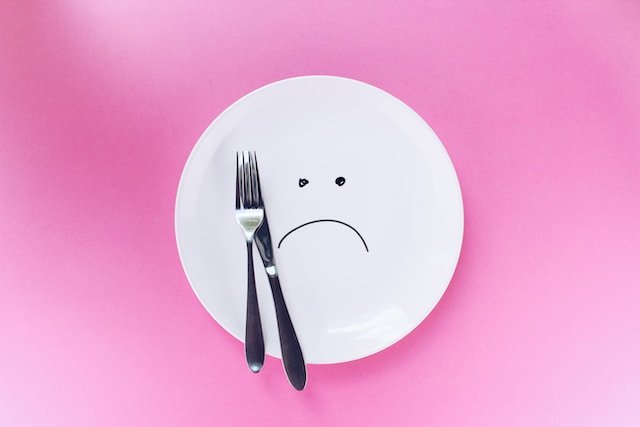The popularity of open relationships has surged in the dating world over the past few years, with many individuals considering non-traditional relationship structures, including polyamorous relationships. Dating app data supports this trend; however, negative attitudes and cultural norms are still hindering widespread adoption. Let’s explore the reasons behind the trend of open relationships and the barriers to widespread adoption of open relationships
The Polyamory Movement and Generational Differences

The rise of the polyamory movement has brought about a shift in attitudes towards open relationships, particularly among millennials and Generation Z. While open relationships and non-monogamy have been around for decades, they have recently gained more visibility and acceptance in mainstream society.
One reason for the growing interest in open relationships among younger generations is their inclination towards exploring non-traditional relationship structures. This curiosity and openness to new experiences may be attributed to their desire for personal growth and self-expression. Millennials and Gen Zers are often characterized as the “me generation,” meaning they prioritize their own needs and desires. In non-monogamy, individuals have the freedom to be themselves and pursue relationships that align with their values and preferences without conforming to [1] societal expectations.
Polyamory, a form of non-monogamy that involves having multiple romantic partnerships based on mutual consent, has gained significant popularity among millennials. It offers an alternative approach to love and relationships, emphasizing honesty, communication, and respect for everyone involved. Polyamorous individuals often form close-knit communities where they support and care for each other, similar to the concept of family.
The appeal of polyamory to millennials goes beyond the desire for novelty and exploration. It challenges traditional notions of love and provides a platform for individuals to redefine their relationships according to their own terms. Polyamory allows for the expression of love, emotions, and desires in a way that feels authentic and empowering. It offers a unique relationship hack, enabling individuals to build connections that are genuine and fulfilling.
Open relationships, including polyamory, offer a departure from the conventional monogamous relationship model. While monogamy has long been considered the norm, the younger generation is questioning its feasibility as a lifelong commitment. Surveys have shown that only 51% of people under the age of 30 believe their ideal relationship is completely monogamous. Modern marriages are increasingly viewed as romantic partnerships based on love and mutual support, rather than solely for procreation or financial stability.
One of the main advantages of open relationships is the freedom to explore one’s desires and needs outside of a traditional partnership. Non-monogamy provides an opportunity to engage in relationships that bring positive experiences and personal growth, irrespective of their duration. Instead of placing unnecessary pressure on a relationship to last forever, individuals can focus on the present and enjoy meaningful connections that may last for years or just a few weeks.
While open relationships offer many benefits, it is crucial to address the challenges and potential risks associated with them. Jealousy, for example, is a common emotion that can arise in any relationship, regardless of its structure. Open and honest communication is key to navigating these complexities and maintaining the well-being of all involved parties. Building trust, setting boundaries, and prioritizing one’s primary partner can help minimize the negative impact of jealousy and ensure the emotional well-being of everyone involved.
Despite the growing interest in open relationships, it is important to note that they still face societal stigma and misconceptions. Some individuals view non-monogamy as a deviation from the norm or an unhealthy approach to relationships. However, research suggests that practicing non-monogamy can be just as fulfilling and healthy as monogamy, as long as it is approached consensually and with open communication.
The polyamory movement has brought about a shift in attitudes towards open relationships, particularly among millennials and Generation Z. These younger generations are embracing non-traditional relationship structures as a means of personal expression and fulfillment. Open relationships provide the opportunity to explore one’s desires, pursue meaningful connections, and challenge societal expectations. While open relationships may not be for everyone, their growing acceptance signifies a shift towards more inclusive and diverse relationship models in modern dating.
Exploring Reasons for The Trend of Open Relationships in Dating

Open relationships have been gaining popularity in the dating world, with more people expressing interest in exploring non-monogamous relationship styles. There are several factors that contribute to this increasing trend.
One reason for the rise in open relationships is the changing societal mindset. Over the years, there has been a shift towards greater acceptance and open-mindedness when it comes to different forms of relationships. Traditional beliefs about monogamy as the only valid option for romantic partnerships are being questioned, and people are seeking alternative ways to structure their relationships. The increasing visibility and representation of non-monogamous relationships in media and popular culture have also played a role in normalizing these relationship styles.
Another factor is the desire for novelty and variety. Research has shown that both men and women may experience a decrease in sexual desire or boredom when in a long-term monogamous relationship. For women, in particular, the need for novelty and new experiences can be a driving force behind seeking open relationships. The desire to explore different sexual and emotional connections outside of a primary partnership can help individuals maintain a sense of excitement and fulfillment.
The influence of technology and dating apps cannot be overlooked. Dating apps have made it easier for people to connect with others who share similar interests and relationship preferences. There are even platforms specifically designed for individuals seeking non-monogamous relationships. This increased accessibility to like-minded individuals has contributed to the growing interest in open relationships.
The LGBTQ+ community has also played a significant role in challenging traditional relationship norms. LGBTQ+ individuals have long been advocating for the recognition of diverse relationship structures and have paved the way for more inclusive narratives around love and relationships. Their experiences and perspectives have helped shape a more inclusive and accepting society, where individuals feel empowered to explore non-traditional relationship styles.
Personal factors and individual preferences are also important drivers of the trend. Each person’s motivations for seeking an open relationship may vary. Some individuals may be drawn to the idea of expanding their sexual experiences, while others may be more focused on emotional connections. Non-monogamy allows individuals to tailor their relationship structures to their specific needs and desires, fostering a sense of autonomy and personal fulfillment.
It is important to note that open relationships require clear communication, trust, and the establishment of boundaries for all parties involved. The decision to pursue an open relationship should be a consensual and informed choice made by all individuals within the partnership. Open relationships are not for everyone, and it is crucial to engage in [3] self-reflection and introspection before embarking on this journey.
The trend of open relationships in dating can be attributed to a combination of societal shifts, the desire for novelty and variety, the influence of technology and dating apps, the advocacy of the LGBTQ+ community, and personal preferences. As more individuals recognize and embrace diverse relationship styles, the acceptance and visibility of open relationships will likely continue to [2] grow.
Barriers To Widespread Adoption Of Open Relationships

Despite the growing interest in open relationships, there are several barriers that prevent their widespread adoption.
One of the main barriers is the prevailing negative perception of non-monogamous relationships. Research and public opinion polls suggest that attitudes towards consensual non-monogamy are mostly negative overall, although they have become more positive in recent years. This negative perception can deter people from openly engaging in open relationships, even if they are curious about them.
Another barrier is the limited attachment security associated with open relationships. Many therapists still view the traditional “couple bubble” as the only secure way of having a relationship. This perception can make individuals feel that open relationships are not a viable option for them, as they may fear jeopardizing the stability and security of their primary partnership.
Religious beliefs also play a role in deterring people from engaging in open relationships. Many religions uphold the value of monogamy and discourage sexual and/or dating relationships with more than one person at a time. These cultural and religious norms can create barriers, particularly for individuals who desire open relationships but feel conflicted due to their religious beliefs.
Cultural norms in certain communities can also present challenges to individuals hoping to open their relationships. In some conservative parts of the United States, for example, non-monogamy remains taboo and is not widely accepted. These cultural norms can create barriers to exploring alternative relationship structures and prevent individuals from feeling comfortable openly embracing open relationships.
Additionally, while open relationships may be a topic of curiosity and interest for many individuals, the reality is that relatively few people are actively practicing them. Research on sexual fantasies has shown that many individuals have fantasized about non-monogamy, but fewer actually engage in it in real life. This suggests that while interest may be high, the uptake of open relationships may [2] still be limited.
Moreover, even if more people are engaging in open relationships, the subject remains somewhat taboo. Negative attitudes, limited attachment security, religious beliefs, and cultural norms all contribute to the continued stigma surrounding open relationships. This stigma can result in individuals feeling in conflict with societal expectations and may prevent them from openly discussing and embracing non-monogamy.
While interest in open relationships may be growing, there are several barriers to their widespread adoption. Negative attitudes, limited attachment security, religious beliefs, cultural norms, and stigma all contribute to the challenges individuals face in exploring and openly embracing non-monogamous relationship structures. However, as societal norms continue to evolve and more resources become available, it is possible that these barriers may lessen, leading to greater acceptance and understanding of open relationships in the [4] future.
References
[1] Dating experts explain polyamory and open relationships
[2] The rising curiosity behind open relationships
[3] Scholarly articles for Prevalence of open relationships
[4] What Is an Open Relationship? – Verywell Mind
Neal has more than 10 years of experience as a dating coach. He has guided 100+ men and women through the intricate art of courtship and transformed their love lives. Neal’s knowledge of dating strategies, coupled with his genuine empathy and understanding, allows him to help his clients foster genuine and meaningful relationships.



